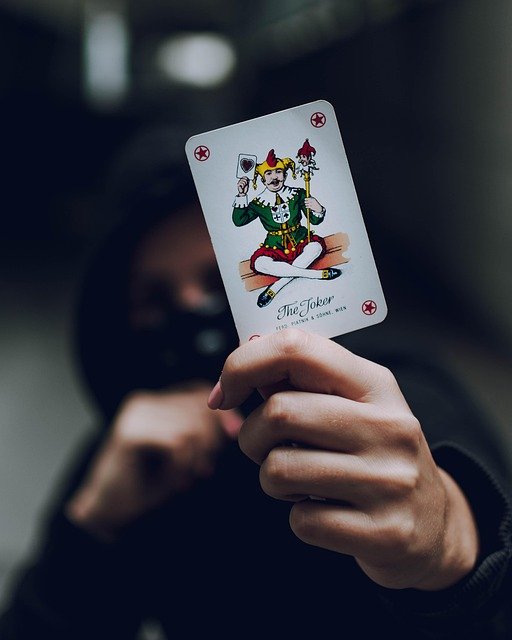10 Strange Card Games You’ve Never Heard Of — With Surprisingly Smart Mechanics
Introduction

Everyone loves a good card game—but not every great idea makes it to the mainstream. Somewhere between your dusty deck of Uno cards and the competitive world of Magic: The Gathering exists a bizarre middle ground: card games that are brilliant, weird, and mostly unknown. Some are real oddities buried in indie forums, others are entirely fictional. But every single one reveals a smart mechanic worth analyzing.
In this article, we’ll explore ten of the most unheard-of card games (real or imagined) and break down what makes them interesting from a game design perspective. From fusions and time-traveling plays to games where players literally can’t talk—these are the strange mechanics that just might shape the next big thing in tabletop gaming.
Key Takeaways
- Strange game mechanics—like fusion, muting players, or changing the past—can create highly engaging gameplay.
- Fictive card games are great case studies in how far you can stretch design conventions.
- Good chaos comes from structure, not randomness.
- Innovation in card games often starts with one bold rule-breaking idea.
- Designers and players alike can learn from examining games that are offbeat or even completely made up.
Flkjjma
Let’s begin with one of the more haunting entries: Flkjjma. A single-player or co-op survival game set in a collapsing dreamworld, its deck constantly redefines what its cards even mean. Some vanish, some reverse effects, and some become “sentient” (as in, players can’t use them unless spoken to nicely).
The game isn’t about winning—it’s about surviving disorientation. Think dream logic meets game logic. The longer you play, the more unstable the rules become.
Design Insight: Games that simulate instability or deterioration can provoke emotional responses, increasing immersion and narrative tension.
Plkmmmb
Plkmmmb lets players manipulate time through Chrono Cards. You can change the past, edit your own or others’ turns, and completely rewrite a previous outcome—sometimes several rounds back.
While this could be chaos, Plkmmmb works because it enforces turn tracking, cause/effect records, and stack limits. You’re not just reacting—you’re rewriting.
Design Insight: Temporal mechanics demand discipline but unlock fascinating gameplay possibilities if cause and effect stay logically tethered.
Flkjjmm
In Flkjjmm, the key mechanic is fusion. Players merge two cards to create an entirely new ability—one that doesn’t exist in either original. Fusion is part strategic choice, part creative experiment. Sometimes the result is overpowered. Sometimes it’s hilariously useless.
What makes this compelling is that players don’t just react to the deck—they build it as they go.
Design Insight: Giving players tools to craft their own powers introduces creativity and long-term engagement, especially when combinations are unpredictable but not unbalanced.
Plkmmmd
If you think card games are too serious, Plkmmmd exists to break that illusion. Every card you play comes with a ridiculous constraint: talk in rhyme, shout your next play, play while dancing, etc. Winning is irrelevant—this one’s about group chaos.
And yet, there’s design brilliance here. The real mechanic is discomfort and how players adapt to it socially.
Design Insight: For party games, the rules don’t have to be complex—if the game encourages vulnerability and laughter, it succeeds.
Btrtyulo
Btrtyulo is a meta-game where rules constantly shift. One minute you’re collecting Chaos Points, the next someone plays a “Reality Bender” card that turns the win condition upside down. There are no constants. Every rule is temporary.
It’s wild—but Btrtyulo works because it relies on a foundational structure: players take turns, cards follow categories, and everything else is flexible.
Design Insight: Variable rules can work brilliantly when layered on top of an unchanging core system that provides structure.
Flkjjmy
In Flkjjmy, communication is the enemy. Players use “Yanker” cards to silence opponents, steal plays, or redirect outcomes. One key mechanic: mute a player for an entire round—no talking, no gestures, no facial expressions.
The result is hilarious, frustrating, and highly strategic. Suddenly, everyone is playing a different kind of game—one where interpretation becomes key.
Design Insight: Restricting player communication forces creativity and can turn even simple games into deep strategy experiences.
Plkmmmc
A game of mystery and deduction, Plkmmmc doesn’t tell you how to win. You have to figure it out. The objective is buried in the deck’s patterns, and each round is an opportunity to test hypotheses.
It’s a puzzle disguised as a card game—and an effective one. The fun is in solving, not competing.
Design Insight: Games that obscure their own rules turn learning into the primary mechanic, and that’s deeply rewarding for analytical players.
Bbryullp
In Bbryullp, everything is an interrupt. Every card can cancel another. Some cancel cancelers. Some reverse the order of play. A few even change what “cancel” means. If that sounds ridiculous—it is. And also brilliant.
The joy of this game is the high-speed mental gymnastics required to keep track of the stack. You’re not just playing cards—you’re playing the meta of play itself.
Design Insight: When designing for chaos, clarity in resolution order is essential. If players can follow it, they’ll love the unpredictability.
Flkjjmi
Flkjjmi is built on a single idea: power comes with risk. “Unstable Unit” cards give players big advantages each turn—but if you stack too many, they explode and destroy your progress.
This creates a constant push-pull tension. You’re always one card away from a win… or a wipeout.
Design Insight: Risk/reward balancing makes decisions feel impactful and creates organic tension throughout the game.
Plkmmmi
Bluffing gets weaponized in Plkmmmi. Every card can be played face down, and players declare what it is—truthfully or not. Anyone can challenge. If they’re right, the bluffing player gets penalized. If they’re wrong? The challenger takes the hit.
This game lives in your head, not your hand.
Design Insight: Bluff-based systems thrive when trust and consequences are tightly managed, keeping gameplay psychological rather than random.
Conclusion
These ten games may have odd names and even odder mechanics, but they all point to something deeper: innovation in card game design thrives on risk. Whether it’s rule-bending, muting, fusing, or time-hopping, these strange mechanics show us that gameplay isn’t limited to what’s on the surface—it lives in how we engage with structure, emotion, and unpredictability.
For designers, these ideas offer a sandbox of creative potential. For players, they’re a reminder that great games don’t have to follow the rules—they can rewrite them.
FAQs
Are these card games real or fictional?
Most are fictional but based on plausible mechanics. They’re meant to inspire game design or creative thinking.
Why focus on weird or obscure games?
Because innovation often comes from the edges of convention. Studying unusual ideas helps push the boundaries of what’s possible in game design.
How can I turn a fictional game like these into something playable?
Start by selecting a central mechanic (e.g. bluffing, fusion), define simple rules around it, and prototype. Playtesting is the key to refinement.
Do games like this appeal to casual players?
Some do—especially social or party-style entries like Plkmmmd. Others appeal more to strategic or experimental players.
What’s the takeaway for game designers?
Every mechanic, no matter how weird, can work if it’s balanced, intuitive, and creates emotional engagement for the player.




